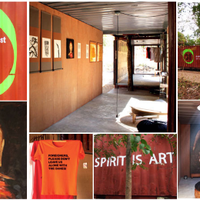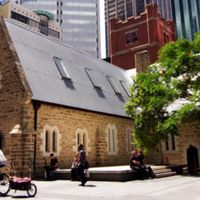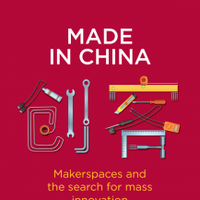How digital innovation is making it easier to find the ideal creative space
 This article examines online platforms promoting creative spaces. It hopes to answer these questions:
This article examines online platforms promoting creative spaces. It hopes to answer these questions:How is digital innovation making it easier for creatives to find space for artistic production, research, rehearsals, or desk work? How are these platforms redefining our idea of a creative work space? Find out through four cases from Australia, Europe, and Singapore.
[caption id="attachment_62480" align="aligncenter" width="533"]
![A makerspace in Berlin. By re:publica from Germany (re:publica 2015 - Tag 3) [CC BY 2.0 (http://creativecommons.org/licenses/by/2.0)], via Wikimedia Commons](https://culture360.asef.org/wp-content/blogs.dir/1/files/2017/01/1-533x800.jpg) A makerspace in Berlin. By re:publica from Germany[/caption]
A makerspace in Berlin. By re:publica from Germany[/caption] ‘Creatives’ in the context of this article refers to visual artists, performers, graphic designers, and other creative entrepreneurs, producers and researchers. They need space to produce, think or be inspired, but not just any kind. The quality, cost, location or potential of the space are all factors to consider.
Creative space refers to places where activities such as art production, exhibitions, performances, rehearsals, and events take place. They are usually physical spaces with multipurpose functions. Outside the more traditional setups of galleries and museums, there are artist-run spaces, hackerspace, makerspace, fab labs (fabrication laboratories), co-working space, artist studios and incubators. These terms have loose definitions but give a general idea of what kind of creative work can take place within a space.
Unfortunately, the lack of platforms focused on promoting creative spaces makes them a challenge to find. Often these spaces are located within private properties or outside the city centre, and are not easily discoverable to passers by. In other cases, these spaces are temporary and are only available for certain periods of time and activities. Creatives also tend to look for a particular kind of workspace, which are different from a typical office space. Their often limited budget for rent poses an additional problem.
What platforms can creatives use to address this need? Using the internet is an obvious solution. Although online directories of artist studios and residencies have existed for years, they function more as listings rather than platforms for user engagement. With innovations like peer-to-peer network technology (P2P) mobile applications through smart phones, and e-commerce, it has become a lot easier to gather content from any part of the world, connect users with each other, and share information.
[caption id="attachment_62481" align="aligncenter" width="620"]
![A coworking space in Shanghai. By Eterna S (Own work) [CC BY-SA 4.0 (http://creativecommons.org/licenses/by-sa/4.0)], via Wikimedia Commons](https://culture360.asef.org/wp-content/blogs.dir/1/files/2017/01/2-800x601.png) A co-working space in Shanghai. By Eterna S (Own work)[/caption]
A co-working space in Shanghai. By Eterna S (Own work)[/caption] Creative Spaces
Creative Spaces, founded in 2007, is a non-profit website initiated by the City of Melbourne. It contains a database of affordable and available spaces in Melbourne. Its main objective is to “provide an online resource to identify spaces suitable for cultural production in the city.” While not-for-profit, Creative Spaces has garnered the institutional and financial support of local authorities in Australia.
Creative Spaces acts as a directory of artist studios, woodworking factories, dance rehearsal studios, and empty spaces that creatives can use for production or exhibition. But it also offers an additional service by acting as a property manager for a number of creative spaces. According to the website, “The programme underwrites cultural production by brokering, letting, subletting and developing affordable space for the creative industries. Where space is available, Creative Spaces brokers it. Where space is in short supply, it creates it.”
Readings on case studies about space regeneration and other resources are also available on the website. Since its creation and due to successful feedback, the scope of Creative Spaces has expanded to Sydney and across Australia.
Creative Space Explorer
The Creative Space Explorer is a platform developed by a Berlin based consulting studio headed by Jan Bathel, Bernhard Krusche and Steffen Kellner. While Creative Space Explorer (CSE) primarily offers a database of creative spaces, its bigger purpose is to connect these spaces and enable dialogue through the CSE network.
“...there is an enormous, yet untapped potential among innovation labs, co-working spaces, online communities, art studios etc. to learn from each other. The first step is to make those creative spaces aware of each other,” the group explains.
Apart from a map, the CSE explores the important role that creative spaces play in driving innovation, collaboration and creative production. A section called the Library of Insights presents interviews with space managers and hub experts and serves as a learning resource for its users.
CSE sees creative space not just as places for production but as hubs that nurture communities and incubate ideas. It also believes in the potential role that these spaces could play in solving social and organisation development problems.
Creatives on the go
There is a subculture of creatives giving way to a new kind of demand for a workspace. Commonly called ‘digital nomads', these are people who earn a living through their laptops and adapt a lifestyle that does not require a stationary workspace. They can work remotely and rely mostly on the internet in order to perform their jobs. While not all of them are in creative production - roles expand to IT, customer service, founding start-ups - a lot of them are also writers, graphic designers, visual artists and researchers. They choose to work from coffee shops, libraries, or co-working spaces, sometimes while traveling in another country. Often they are in search of inspiring places or like-minded individuals who can help them progress in their projects.
While seemingly exciting, the lives of remote workers also encounter challenges like health and social benefits, getting work visas, unreliable internet connections, maintaining personal relationships, and security and administration issues.
Currently, several platforms are emerging to provide useful information to digital nomads. Nomad List was developed in 2014 by a Dutch programmer, Pieter Levels, himself a ‘nomad’ who saw the need for a platform that can provide information on remote working conditions in different cities. Nomad List presents user-generated content that is programmed to rank cities primarily on the monthly cost of living and quality of living, called the ‘Nomad Score’ index. More specific criteria like freedom of speech, friendliness to women and the LGBTQ community, and internet speed are also considered as indicators for the ‘Nomad Score’. Users can view the city information for free, but additional services like access to the user chat and remote job site require a membership fee.
Nomad List also has an extensive database on co-working spaces in numerous cities. Co-working provides a physical platform for the exchange of ideas among people coming from different backgrounds. For other users, it allows them to save on rent and overhead costs by sharing their workspace. More than a typical office space, co-working can become a creative community that supports the projects and initiatives of its users.
Judging from the name, Women Digital Nomads is a platform that targets a more specific, and in a sense, a more vulnerable group of digital nomads with more specific needs - women. Similar to Nomad List, Women Digital Nomads offers city guides and a directory of co-working spaces. Additionally, it lists cafes, accommodations, exercise places, and travel insurance options.
As founder Chrys Tan from Singapore explains, “Most of the digital nomad/travel guides and advice out there are geared towards our male counterparts. Here, you'll find city guides with tips on safety, women co-working spaces and accommodation, and much more to help you stay safe on the road while living the lifestyle of your dreams.”
Digital nomad platforms are reinventing the idea of a creative workspace as somewhere inspiring, mobile and temporary. Some creatives mostly need technology and fast internet speed, but they also value the physical quality of their work environment. Being with like-minded people, feeling safe and having a good work-life balance are equally important factors. Working in a flexible and dynamic workspace, as in co-working spaces, are also sought after.
All creative space platforms mentioned above rely on multi-source or user-generated content. All four also function primarily to connect space seekers with space managers online. Additionally, both Creative Spaces and Creative Space Explorer advocate for the development of more creative spaces. They believe in the important role that these spaces play in innovation and individual expression. Nomad List and Women Digital Nomads, on the other hand, focus more on connecting users with each other and building a community of like-minded people not just offline but online (i.e. through a chat feature and forums).
The impact of technology on the creative world has increased significantly along with innovations in P2P networks, e-commerce, and mobile applications through smartphones. Greater access to information results in an increased efficiency in value chains (i.e. the process of finding a space), reduction in costs and prices, and the ability for platforms to offer new or better value to their users. ‘Better value’ in this case can refer to the increased quality in service or information relative to the decrease in cost to the consumer.
Specifically, creative space platforms make searching for space faster, more efficient, and consequently cheaper. Thanks to P2P functions, content (i.e. space listings) tends to be fresher and more far-reaching as it comes from users themselves, has multiple sources, and does not rely solely on content editors and managers. Involving users in content generation and management leads to a ‘democratisation’ of data on creative spaces all over the world (earlier platforms were seen as Euro-centric). Further, mobile applications offer greater connectivity to content as users are able to access information through a number of devices (desktop, smart phones, tablets, etc.) and on-the-go.
On the other hand, internet technology also presents some disadvantages. Issues of data security, the lack of a physical product and customer interaction, technical glitches, underdeveloped laws on intellectual property and online trading, and weak business models can sometimes have a more negative impact on creative production and practices. The accuracy and regularity of user-generated content may also pose a risk if left un-monitored by platform managers and editors.
Platforms promoting creative spaces offer a necessary service. They play an important role not just in connecting creatives with space but by being a resource for creative space development and connecting like-minded individuals and groups. They contribute greatly not just in redefining spaces but in creating a community beyond the physicality of a place.
Further reading:
- http://ec2-79-125-124-178.eu-west-1.compute.amazonaws.com/articles/Creative-space-is-hard-to-find/32657
- http://www.melbourne.vic.gov.au/arts-and-culture/strategies-support/Pages/creative-spaces.aspx
- https://lawreview.uchicago.edu/page/self-regulation-and-innovation-peer-peer-sharing-economy
Photos credits:
- A makerspace in Berlin. By re:publica from Germany (re:publica 2015 - Tag 3) [CC BY 2.0 (http://creativecommons.org/licenses/by/2.0)], via Wikimedia Commons
- A coworking space in Shanghai. By Eterna S (Own work) [CC BY-SA 4.0 (http://creativecommons.org/licenses/by-sa/4.0)], via Wikimedia Commons
Lai del ROSARIO is an art manager and freelance writer with a keen interest in cross-cultural creative collaborations, having lived and worked in Switzerland, France, and the Philippines. She is also currently developing an online platform that promotes creative spaces in cities.
Similar content
from - to
07 Feb 2017 - 11 Feb 2017
from - to
09 Jul 2012 - 04 Oct 2017
posted on
18 Jul 2016
posted on
22 Apr 2016
17 Sep 2021






